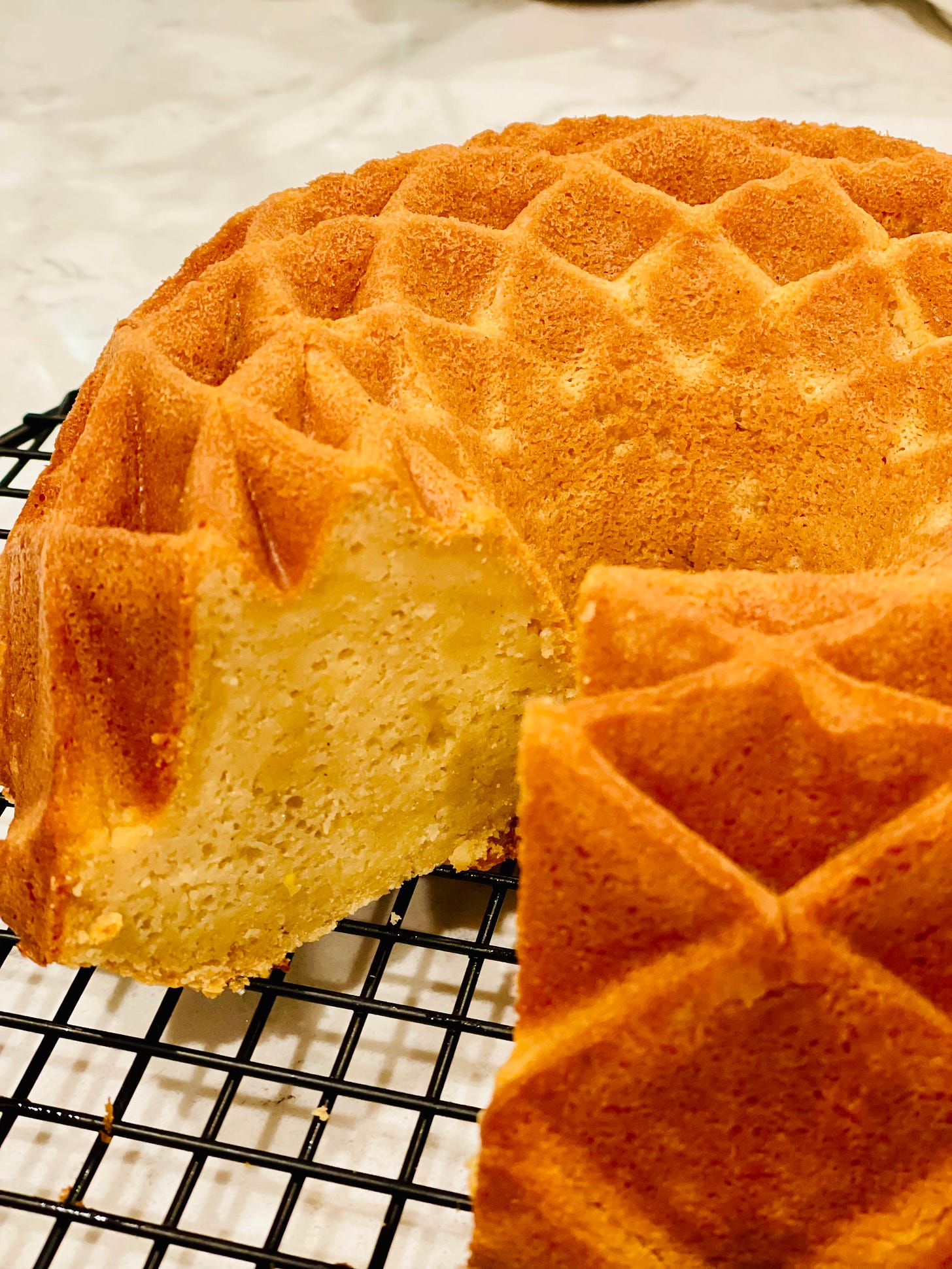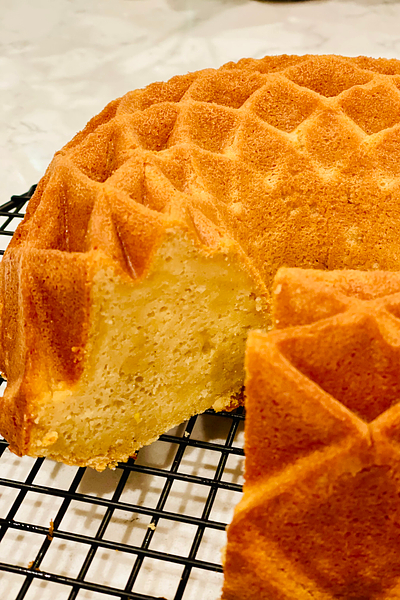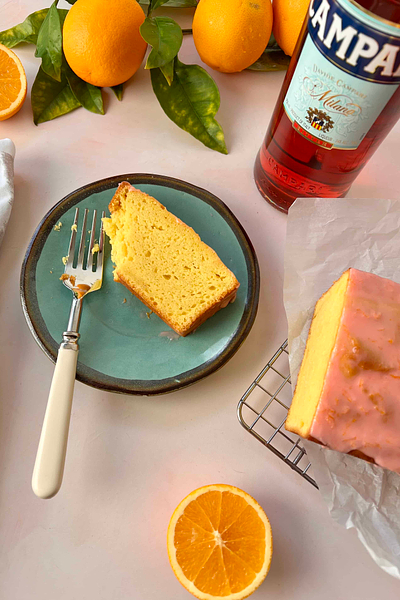Hi and Happy Thursday, dear W4D frens! We’ve been noticing something brewing on social media, and it’s an old phenomenon that has gained new traction lately… So this week, we’re giving you a few BLENDER CAKES to whir up this weekend!
MEXICAN SWEET CORN BLENDER CAKE
EK: When Anthony shared a reel with me on Instagram, we instantly knew what we were going to explore this week.
The reel was Chris Kimball demonstrating Mexican Sweet Corn Cake using a blender. When I saw it, I knew I had to try it.
Chris’ description took me back to my trips to Oaxaca, where I had the best sweet corn tamale of my life. I was there on a food trip with Susana Trilling, and found this delicate, sweet, fresh corn tamale from a street vendor.
It also reminded me that when Susana took us into the kitchens of home cooks, they all used blenders to make marinades, batters and moles.
AU: And don’t forget salsas! In the U.S., we often blend up ingredients for a salsa and leave them raw, but I love that extra step of cooking the blended salsa to make it balanced and extra flavorful.
EK: Agree! Many sweets and corn snacks in Mexico are dense and—what Anthony calls—stodgy. I like to think of it as almost custardy. This is exactly what Chris Kimball’s slice of sweet corn cake looked like in his reel.
I got the urge to try the cake after dinner on Sunday and that meant I was going to make the cake with whatever I had on hand.
I used a can of creamed corn instead of fresh corn, a container of Greek berry yogurt—it was the kind of yogurt with the “fruit on the bottom,” so it was plain yogurt plus a little bit of jam. I also used almond flour instead of corn meal, because I ran out of fine cornmeal. Plus, I added a sprinkle of cinnamon because I think cinnamon is the perfect accent for sweet corn. Otherwise, I followed Chris’ recipe which you can find below.
EK: When I finished mixing the wet ingredients with the dry ingredients, I realized that my volume of batter was enough for a small Bundt pan. Since I love the look of a Bundt pan, I use them every chance I get. I chose a Bundt pan with lots of nooks and crannies that reminded me of all of the rows and rows of corn kernels.
As you can see in the photograph, the sugars from the corn and the sweetened condensed milk made the most beautiful golden brown crispy crust on the cake.
AU: I want to dive right into that cake! It almost seems like a French Canelé in a way… super crispy outside, with an almost custardy center… YUM!
EK: That is a great analogy. When it was still warm, that’s exactly what it was like and why I recommend eating it warm.
I wanted to taste the corn flavor without any extra sugar, so I didn’t sprinkle confectioners sugar over the top or make a glaze. The cake is lightly sweet and the flavor is very reminiscent of that sweet corn tamale that I had on the streets of Oaxaca many years ago.

EK: As I puréed everything in the blender, I thought that this technique could probably be used for lots of different cakes and sweet breads.
Anthony created an orange blender cake with a Campari glaze—hello Negroni! And I had had such success with the sweet corn cake that I decided to take my favorite banana bread recipe that I developed for my cookbook, Steak & Cake, and see what would happen if I made it in a blender.
I happened to have three extremely ripe bananas that were begging to be made into banana bread, so I adapted the recipe to the blender. The sugar, bananas, vanilla, eggs, and oil blended seamlessly into a silky liquid.
I gently mixed in the flour and noticed that the batter was completely homogeneous and thinner than it usually is. This makes sense as I usually make this banana bread with a blending fork and use nothing automatic to finely puree everything.
EK: I didn’t add walnuts to these loaves, but I topped them with pumpkin seeds. They baked beautifully in about the same amount of time, but there was one key difference. This banana bread is a brown banana bread.
My theory is that because the bananas are completely liquefied in the batter, the sugars in the banana permeate the whole cake and it caramelizes to a darker brown as it bakes.
EK: This makes the cake look different; it’s a brown banana bread, but the cake crumb is delicate and it bursts with ripe banana flavor.
You can certainly still make this banana bread traditionally, using a blending fork and my three bowl method, but if you were looking for a quick and easy blender banana bread recipe, this is a winner.
ORANGE BLENDER CAKE WITH CAMPARI GLAZE
AU: As my sister from another mister said earlier, this is like a Negroni in cake form. And to me, it is the perfect not-too-sweet treat to have after dinner (or for an afternoon snack, or with tea, or just because you deserve some joy in your life).
If you don’t like the bitter Campari, you could easily substitute another liqueur or even bourbon could be fun (like an old fashioned?!) in the glaze, but it’s also delicious as a super-orangey glaze by using orange zest and some of the juice before you blend up the whole oranges.
EK: You are speaking my language! I love them both. I can’t decide what to try first, the Negroni or the Old Fashioned!
AU: Adding an entire orange–pith and all–imparts a wonderful bittersweet flavor that’s not so different from orange marmalade. A high-speed blender is the best way to make your orange puree as smooth as possible, but it can also be done in a food processor. The combination of butter and olive oil keep this cake moist as can be for days. I made a version of this cake using Samantha Seneviratne’s recipe in the NYT Cooking app. It was great, but I wanted to make some tweaks, so this is how I do it.
AU: First, you need a whole orange. If you live in Los Angeles, this is not an issue. In fact, I’m lucky to have an entire orange tree in my backyard, so I didn’t have to go far for the main ingredient! This year, my oranges are much smaller, so I needed two of ‘em to yield about 1 cup of puree (you want one that weighs about 280 grams). After zesting a half teaspoon or so to reserve for the glaze, I quartered the oranges and removed the middle pith. This isn’t necessary for pith purposes, but cutting out that middle pith usually reveals any seeds that may be lurking in the center of the orange.
Then you just blend the chunks up in a blender with a quarter cup of whole milk. It instantly took me back to Hulen Mall and going to Orange Julius!!
EK: Your crop may be small, but it’s fruitful. That’s one loaded orange tree! And your cake couldn't be prettier. Something magical happens when you add a little bitter to sweet. The bitter makes the sweet more interesting and marmalade and Campari are perfect examples.
AU: The cake comes together easily by whisking the sugar with the wet ingredients, and then adding the dry. You can bake this in a loaf pan, like I did, or you can make it in an 8-inch square cake pan. I don’t own any 8-inch pans, so loaf pan it was. Also, I think when something is baked in a loaf pan, it somehow can be considered “a breakfast food,” too, so why not expand your eating potential??
AU: While the cake cools completely, mix together your glaze. I mixed 3/4 cup of confectioners’ sugar with 4-5 teaspoons of Campari and a little more than a 1/2 teaspoon of orange zest (that I reserved pre-blender). It’s a delicious hit of Negroni-like bitterness and has a lovely pink hue.
Pour the glaze over the cooled cake, letting it drip down the sides, and then let the glaze set. Slice as desired and serve away!














Never heard of a blender cake. Now I have—and these versions sound and look delicious!